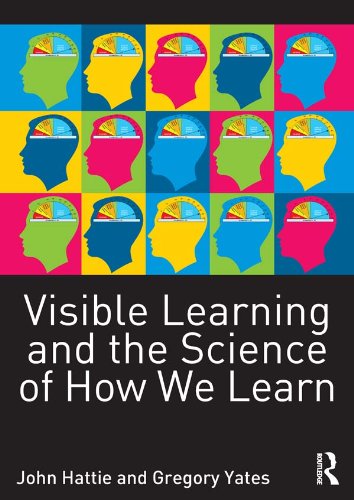Book Overview: Visible Learning and the Science of How We Learn Link to heading
Summary Link to heading
Visible Learning and the Science of How We Learn is a book by John Hattie and Gregory C. R. Yates that builds upon Hattie’s previous work, Visible Learning, which is a comprehensive synthesis of over 800 meta-analyses related to student achievement. In this sequel, Hattie and Yates delve deeper into understanding the cognitive processes that contribute to learning and teaching effectiveness. The book combines insights from cognitive psychology with Hattie’s research on visible learning to explain how students learn and what teaching strategies optimize the learning process. It is structured to explore various learning themes, including motivation, feedback, concept formation, and the biology of learning, to provide educators with a robust framework for enhancing student achievement.
Review Link to heading
The book stands out for its integration of evidence-based educational research with practical insights, making complex theories more accessible to educators and practitioners. Hattie and Yates offer a thorough examination of the psychological principles underlying effective teaching, supported by empirical data. One of the book’s strengths is its ability to translate dense research into actionable strategies that educators can implement in their classrooms. Some critiques arise due to the sheer volume of information, which might be overwhelming for some readers, and the need for readers to have a basic understanding of educational psychology to fully grasp all concepts.
Key Takeaways Link to heading
- The Importance of Feedback: Effective feedback is crucial for student learning as it helps identify gaps in understanding and guides improvement.
- Cognitive Load Theory: Teaching strategies should consider the limits of working memory and avoid overwhelming students with excessive information at once.
- Motivation and Engagement: Understanding what motivates students can significantly impact their ability to learn and retain information.
- Visible Learning Approach: By making learning visible, educators can better assess student progress and adjust their teaching methods accordingly.
- Meta-Cognition and Self-Regulation: Encouraging students to reflect on their thinking and learning processes enhances their ability to regulate their own learning.
Recommendation Link to heading
Visible Learning and the Science of How We Learn is highly recommended for educators, school administrators, and education policy makers who are interested in evidence-based practices for improving student outcomes. The book provides valuable insights that bridge the gap between research and practice, making it an essential read for those looking to deepen their understanding of how students learn and how teaching can be more effective.
